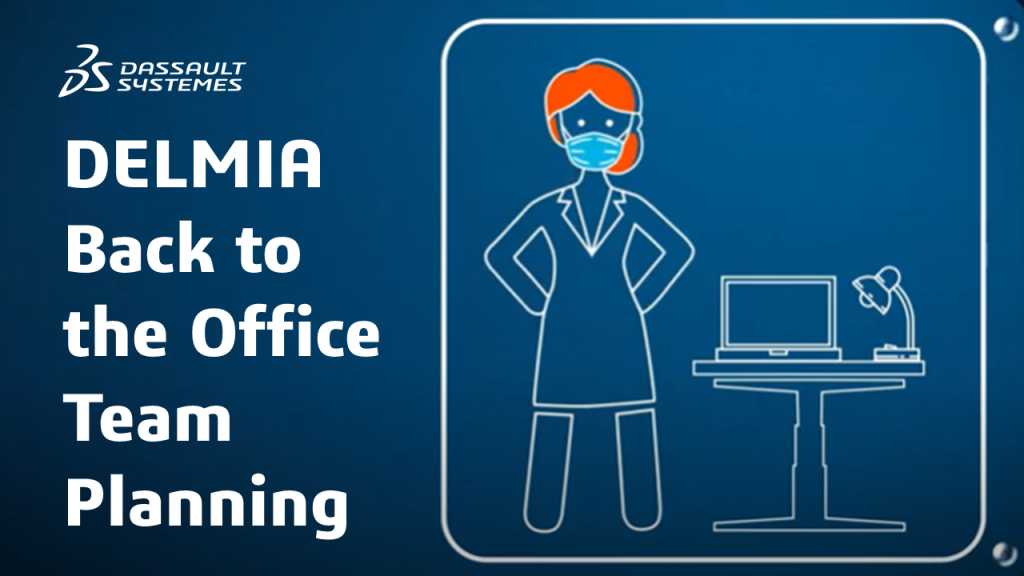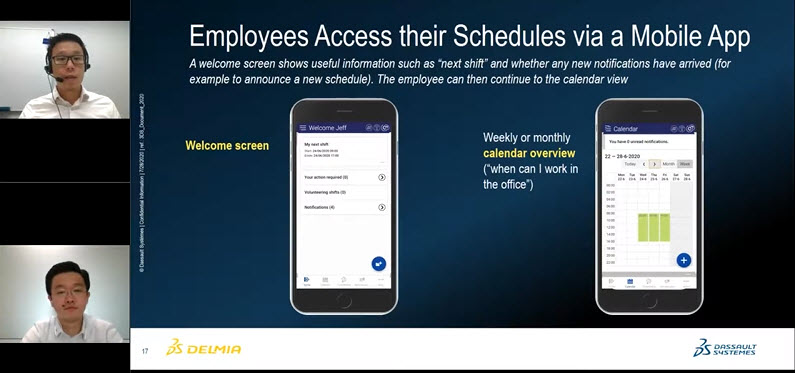
On July 28, Dassault Systèmes’ DELMIA APAC Sales Leader, Sai-Keet CHOW, and DELMIA Industry Process Consultant, Jason Yeoh, held a webinar on “Back to the Office Team Planning: Pivoting the Workplace to the ‘New Normal’”. In this blog post, Sai-Keet examines how companies can take practical steps to prepare for new disruptions and make contingencies as the pandemic situation evolves…with technology.
The pandemic has fundamentally changed all facets of society. Though companies are starting to welcome their employees back into the office with the easing of lockdown restrictions, we cannot let down our guard. COVID-19 cases continue to rise around the world, and even countries hailed for their early success are now battling a new wave of cases.
Agility is vital when dealing with an unprecedented crisis where there are many unknowns. Dassault Systèmes operates nine offices in major cities across AP SOUTH, each of which are located in countries encountering different phases in their COVID-19 response. Reopening an office for is a delicate process. Balancing business needs with employees’ safety demands a comprehensive back to the office team planning solution.
The Capacity Master Plan: A Central Overview with Global Visibility

Three Components of DELMIA Back to the Office Team Planning solution
When planning workforce resources, companies need to take into account capacity restrictions at three levels – the building level, the site level, down to the room level – with the topmost priority on employee wellbeing and safety.
Dassault Systèmes deploys a central overview with global visibility in office capacity planning, similar to how we deploy our industry solutions, to decide who is the optimal group of people that can return to the office. We started out at 25% capacity, and slowly ramped up to 50% for offices in cities where community transmission is under control, and dialed back to full ‘work from home’ mode in cities experiencing a second wave.
The workforce planning team devotes much time studying new information and advisories from public health officials to keep abreast of the local regulations and policies of each city where our offices are located. Based on this information and taking into account the overall capacity of each office, simulation technology is applied for scenario impact analysis.
For example, what is the impact of the “work from home” mode on the Finance team during the month-end closing of books? How can critical project milestones for a major customer be fulfilled with the workforce at 25% capacity? These different scenarios are simulated in the Master Plan, giving managers a central overview to build a consistent and transparent decision-making framework to respond and adapt quickly to minimize infection risk.
Team Level: Decentralized Planning, Employee Scheduling

The Plan optimizes workplace capacity while incorporating the specific preferences and requests of employees
The Master Plan is filtered down to team level, where managers as tasked to fine-tune their team plans, as they are in the best position to gauge team capacity workload, individual workload, project progress, as well as employees’ personal preferences.
In preparation for the return of employees, Dassault Systèmes HR team conducted surveys to get a pulse on employees’ readiness to return to the office. It’s important that we understand people’s concerns when returning to the office and let employees have the opportunity to provide input into our decision-making.
While many employees were eager to return, just as many were hesitant to return due to underlying health concerns for family members, such as elderly parents, or other constraints, such as childcare. Dassault Systèmes took a strong position on safety from the start to help build confidence in employees, with plans to further increase on-site capacity based on local government guidelines and the science-based information.
As of August, Dassault Systèmes is at Phase 2 of office reopenings in six out of its nine offices in AP SOUTH.
Employee Level: Preferences and Restrictions

Clear and frequent communication with employees is essential throughout the different phases
Ongoing, frequent communication to engage employees and ensuring that they stay motivated are priorities for Dassault Systèmes during the return to work phase. It presents an opportunity for companies to rethink employee engagement in ways that respect individual preferences and restrictions – their home situation, whether they have elderly parents or young children to care for, how they commute to work, what kind of skills they have —while also adapting to rapidly changing circumstances.
The plan for each week is communicated through an employee portal, accessible 24/7, where requests for changes and personal preferences can be updated via the portal, and reflected in subsequent plans.
For example, if an employee opts to return to office two days in the week, instead of three, or if the team manager decides to split teams into shifts. These adjustments are done at team level plan, then updated plan will be communicated again to each team member via the portal.
Like every company during this ongoing global crisis, Dassault Systèmes is on a journey, learning every day to make the best possible choices for our people as the situation evolves, through technology – the DELMIA Back to the Office Team Planning solution. Watch the full webinar replay for more information and a detailed step-by-step guide on how to deploy the solution to optimize your workforce.
